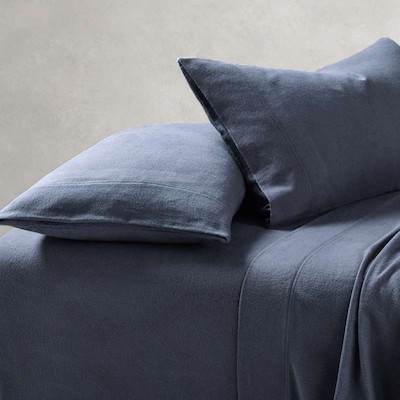Cotton Sheets online in Australia
Cotton Sheets online in Australia
There are three factors that determine the standard and feel of a sheet: The fiber from which it's made, how the material is woven, and therefore the thread count. When evaluating a group , search for these three key pieces of data and use it to seek out the simplest sheet for you.

What is it made from?
Cotton is the most common fiber for bed sheets, and there are three main varieties: American Upland, Pima, and Egyptian. American Upland is that the most generally used cotton and may be short- to long-staple ("staple" refers to the length of the individual fibers). If a label only says "100 percent cotton," it's likely to be American Upland. Pima may be a fine, long-staple cotton that yields a really soft weave. The word "Supima" often appears on the labels of Pima sheets as a trademark of the Supima Association, which promotes Pima cotton. Egyptian cotton is that the finest, longest-staple of all. Grown within the Nile Valley, Egyptian cotton produces a particularly soft and supple weave.
Flannel sheets (also called brushed cotton) are made up of cotton fibers that are to tug loose tiny top fibers. They feel slightly fuzzy, making it a comfortable choice for winter or cold climates. Other commonly used fibers for bed linens are silk and linen. These are more luxurious and considerably costlier than cotton and need special care when it involves cleaning, but they will be a worthwhile investment. High-quality linen sheets are durable enough to last for many years , are antimicrobial and are airy and cooler to the touch than cotton. (Since they're more breathable, they're more popular in warm climates.) Silk sheets, when properly cared for, also are durable and ideal for keeping warm within the winter and funky within the summer.
How is it woven?
Words like Oxford, percale, and sateen on sheet labels ask the way the material is woven. Each weave has different characteristics. Percale may be a plain-weave fabric, meaning that the warp and therefore the weft threads cross over and under one another one at a time. The threads are tightly woven, which ends up during a fine texture and finish. They get easier with each wash. (Try: Martha Stewart Collection Cotton Percale 400 Thread Count Solid and Print Sheet Set Collection, Created for Macy's; from $60, Macys.com.)
Oxford has twice as many warp threads-threads that run lengthwise-as weft threads, which run widthwise. Commonly wont to make men's dress shirts, oxford cloth stands up alright to laundering. It feels soft, heavy and crisp, making it perfect for pillowcases. (Try: Wainscott Oxford Weave Sheet Set; from $198, serenaandlily.com.)
Sateen sheets have an expensive look and feel. the material is formed during a weave , during which warp threads interlace with filling threads, exposing more thread surface and creating during a lustrous, silky, durable fabric and retains heat well-perfect for cold climates. (Try: Brooklinen Luxe Move-In Bundle in Window Pane; from $488, Brooklinen.com.)
What about thread count?
Thread count refers to what percentage threads compose one sq in of sheet fabric, including the horizontal threads and therefore the vertical threads. This number ranges from 150-count (usually found in lower-priced sheets or children's bedding) to up to 1,000 or more (for the foremost expensive luxury sheets).
In general, a sheet with a better thread count are going to be more durable and feel softer. A thread count of 200 may be a good standard; a count of 300 are going to be noticeably softer. But above a particular point-say, 500 to 600 threads per inch-you won't be ready to feel the difference. it is best to save lots of your money for a special splurge. and really high thread count sheets tend to be less durable than something within the 400 to 600 thread count range.
While all of those factors should be taken under consideration when choosing sheets, ultimately, your personal preference is most vital . the simplest test will come once you take your sheets home, wash them, and sleep on them for a short time .



